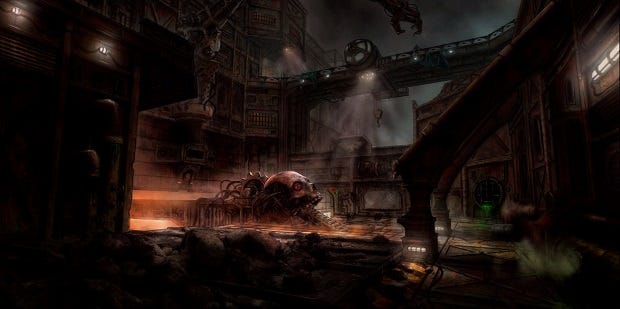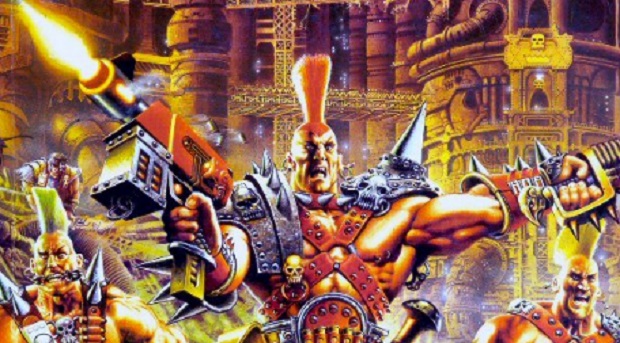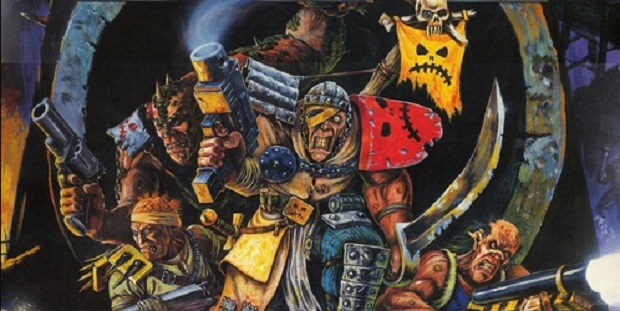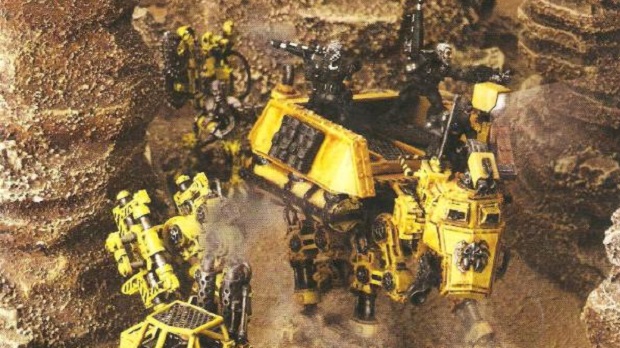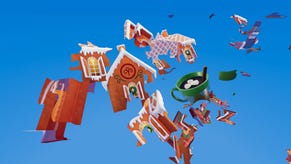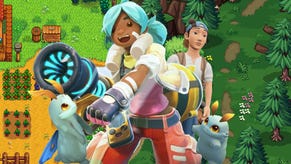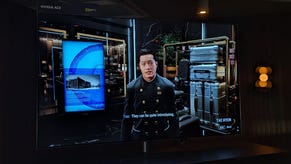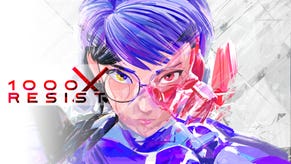Necromunda has bullet casings the size of tower blocks
The new industrial revolution
Necromunda [official site] is finally coming to PC, with the subtitle Underhive Wars. It's a game set in the underbelly of the factory planets that power the eternal crusades of the Warhammer 40K universe. Players control rival gangs, skirmishing in the shadows of giant machinery. I spoke to Rogue Factor about their upcoming adaptation of this long lost Games Workshop tabletop favourite coming, and here are the important points, including details on the movement system, camera, level architecture and INFINITE PIPES.
Rogue Factor previously adapted Mordheim and they'll be using a similar movement system for Necromunda rather than moving to a more conventional turn-based tactical approach. That means you'll have direct control of characters during your turn, moving, aiming and firing within a limited sphere based on their action points allocation. The camera will be similar as well, resembling a third-person RPG rather than the isometric XCOM-like angles I associate with tabletop gaming.
The architecture of the world is important, particularly the scale which sees levels built around a single bullet casing as large as a tower block. You're fighting among the component parts of the enormous death machines that litter the battlefields of 40K, and Rogue Factor want your human characters to feel tiny and inconsequential.
"It's super-exciting. Necromunda is a license that hasn't been depicted visually a lot so a lot of our work is to take the few concepts that were done for the rulebook, and to be inspired by that and figure out what it should look like. Necromunda is the place where everything is being made for the Emperor, or at least most of the machinery and equipment. So we were very aware that the size of these battleships, for example, makes no sense when you're at the human level, so we thought what if we look at just one part. One cannon. But, no, what about just one bullet. One bullet casing.
That's very fun to work with, because then we think, well how do you transport that bullet? With a train and that train has a locomotive the size of an aircraft carrier. That opens up all kinds of possibilities for level design and sets us apart from many other videogames, which are mostly set in proportions that are very human. And it's a different side of the 40K universe as well."
Given that Rogue Factor are depicting this part of the universe, visually, in more detail than ever before, I asked how much input Games Workshop have.
"It's a really nice relationship. We actually have a lot more freedom to develop the visuals, to make sure it works for a videogame rather than tabletop. A lot of the artwork for Games Workshop is very busy visually, and that makes a lot of sense because as a still, you have time to look at it, admire it and enjoy the details, but in a videogame that style would make a very noisy picture.
For us, the challenge has been to take the large scale and what makes Games Workshop art great, and depict that in a way that works visually for a tactical game on a screen."
Alongside this massive scale, the development of the actual characters is vital, and there's a greater focus on building and enhancing your squad than in Mordheim. Rogue Factor aren't talking in detail about the structure of the game yet, but I did get some information.
"You build your squad, much as you did in Mordheim, and the members follow you, gain experience and progress. That's very dear to us, the progression, and we want to go much further than we did in Mordheim. There are other elements we're not talking about yet, but there will be a lot more depth and replayability. We want to open up the various build opportunities for each character to give a wide range of strategic possibilities.
We want to make sure that whichever House you play, and there are six, you have a very unique experience. That goes to the locations they inhabit, the jobs they do, the equipment they use. So there are biker gangs, industrial workers, and they're all distinct. The Houses come straight from Games Workshop and so does the vertical aspect, directly from the tabletop game. It was the first tabletop game to really have that verticality, and there's something really interesting about adapting that. It's twenty, twenty-five years old, and it still has such a passionate fanbase, not just because of the setting but because it was doing something different."
The architecture will be responsible for the biggest tactical shift. Combat mostly takes place from a distance rather than up close and personal, and weapon ranges will be one of the most important tactical considerations. Using cover to get close enough to fire a high power, low range weapon, or pinning opponents down with sniper fire. Range isn't just horizontal lines across the battlefield though, you'll need to keep track of enemies above and below. As in the example of that giant bullet casing, there will be much greater use of verticality.
And the INFINITE PIPES? Well, maybe not quite infinite. But they're procedural pipes. Levels will be more hand-crafted than those in Mordheim, though there will still be procedural elements. The example I was given involved pipes. The world should feel cluttered, thick with details, to show its industrial workings. But laying down every piece of piping by hand would be one person's job for the entire development cycle - the Batman cape of the Warhammer universe - so elements such as the pipes have their own procedural generation tools so that levels can be busy with essential details without taking hundreds of hours from what is still a small team.
"Repetition is so important for us. It fits so well with the industrial setting, because these are machines building machines, but it also makes sense. For example, instead of having one column with lots of detail, we'll have a fairly simple column but repeat it many times, to give a sense of scale. It gives us the sense of size but is also feasible for a team of our size. We don't have 600 people on this project, like some studios can, so we find ways to achieve the ideas in smart ways."
But how does this industrial nightmare look? Grimdark? Gray? Repetitive?
"Grimdark is our art direction (laughs). We want to go in that direction, but we can't go too grim. It'd be very easy to fall into a very gray colour palette, so the core is based around the grimdark feel, but then we use light and colour to bring out highlights and details. If the game is just rust, there's no differentiation between one area and the next, so we want to have pockets of contrast to make sure the environments feel distinct. And not too depressing!"
I mentioned that Relic's Dawn of War III art department has a sign that says "If in doubt ADD MORE SKULLS", and asked how important skulls are to Necromunda. Pipes and bullets are all well and good, but I'd like to see skulls the size of buildings and infinite procedural skulls as well.
"In our concept piece, the main thing that's featured is a skull crusher. It grinds skulls, in the mouth of another, larger skull. Skulls are important."
It'd be good to finish on skulls, but I asked one final question. How would Rogue Factor describe Necromunda to someone who has never heard of it before - what is the appeal in a nutshell (nutshells may be the size of a planet)?
"It's basically a mix of Judge Dredd, Mad Max and Sons of Anarchy."
Necromunda: Underhive Wars does not have a confirmed release date.
